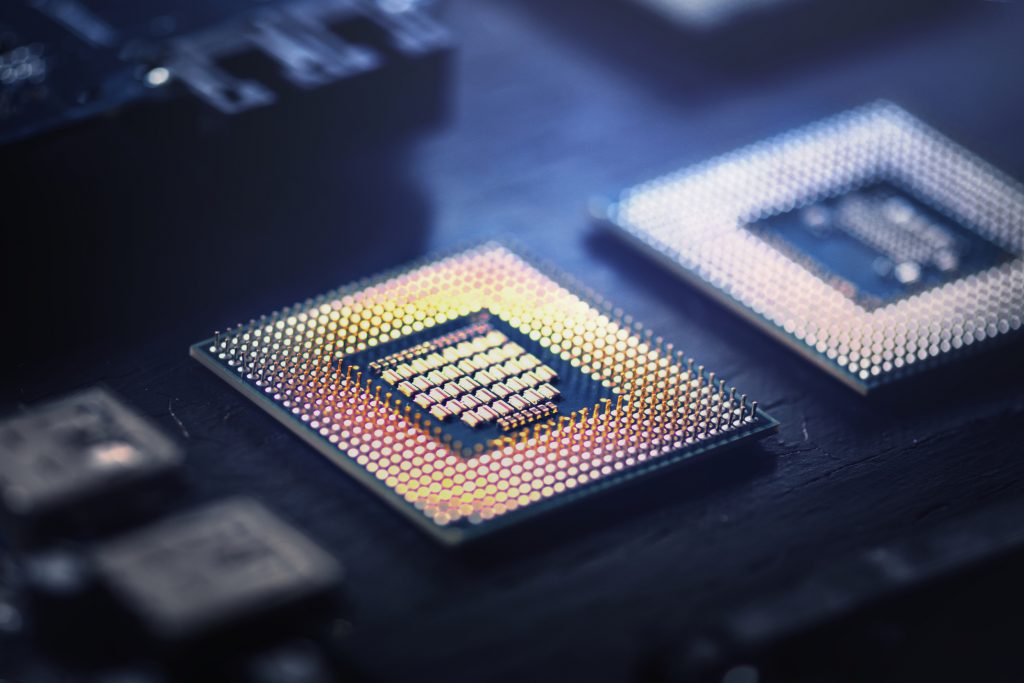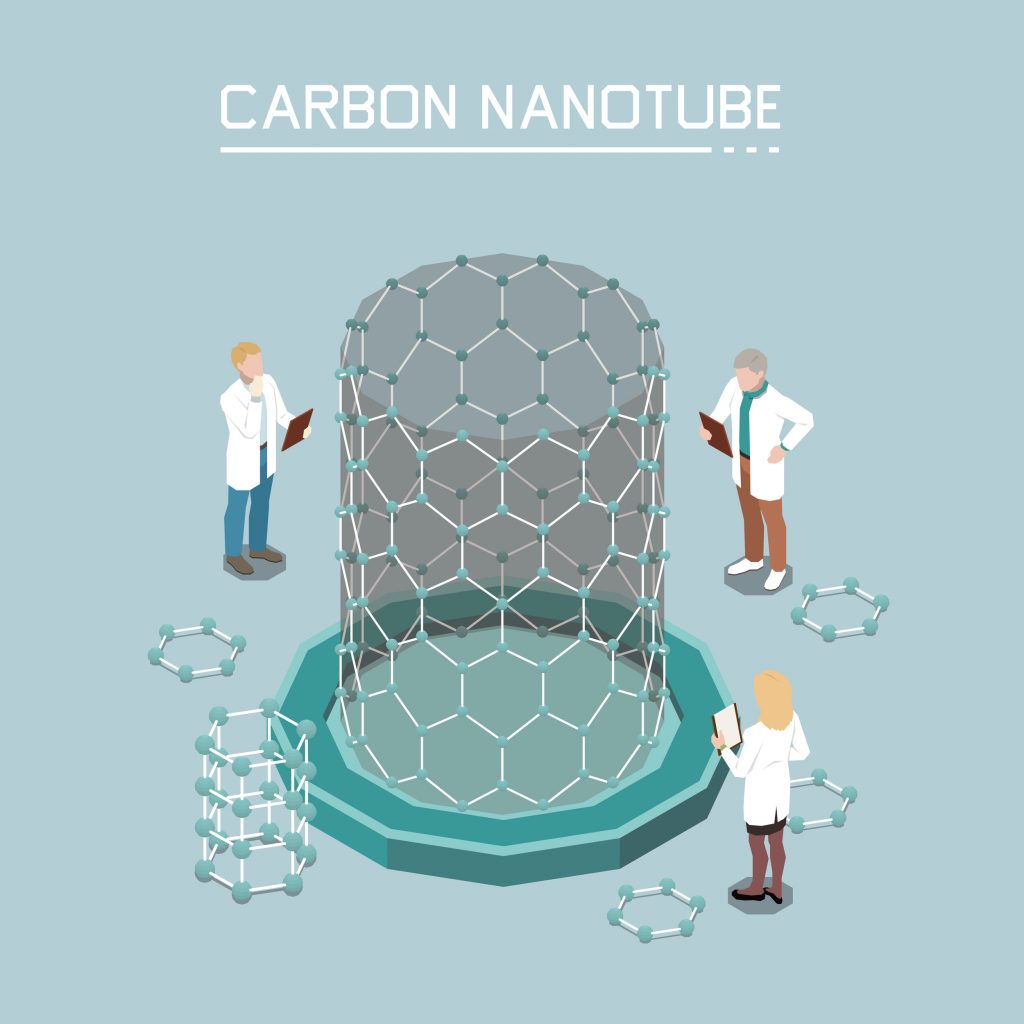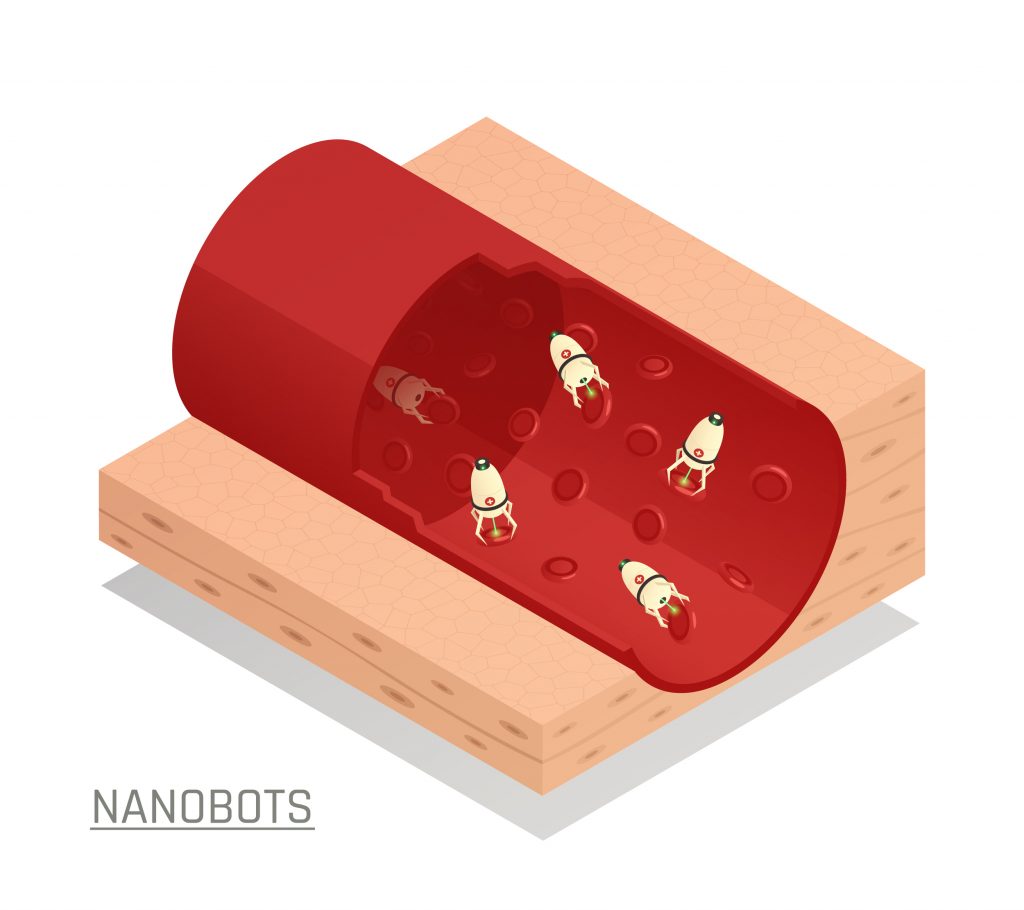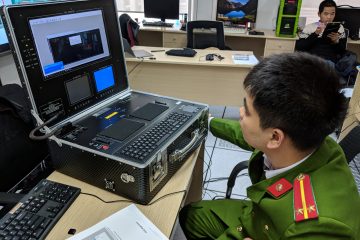Nanotechnology: what is this kind of technology?

Nanotechnology is quite a recent field in science, but it is already improving our lives everyday. Find out how!
Reading the word “nanotechnology” evokes some feelings of science fiction.
When we think of it, we normally think about small, intelligent, self-replicating robots which can either cause havoc and destruction or can improve people’s lives in miraculous ways.
However, it is very much real science, but it isn’t nowhere near as advanced as we see in science fiction.
At least not yet.
But it’s full of interesting and very useful technologies, some that we are already using.
Let’s take a look.
What is nanotechnology?

One thing that fictional and real nanotechnology have in common is that they are all about really small stuff.
The “nano” means their measurements fall between 100 and 1 nanometer (nm).
That’s between one thousand and one hundred thousand times smaller than a milimeter (or about 25,400 to 2,540,000 times smaller than an inch).
That’s completely invisible to the naked eye.
That’s smaller than bacteria and most viruses.
Natural things that have that size are pretty much just big molecules, like DNA strands.
Just from thinking about its size, it’d be hard to think about what to use it for. However, things that are that small can have some very interesting properties.
For example, at the nano scale some materials can change properties. They can become transparent, more soluble in water, can enter combustion, or become more reactive.
Nanotechnology basically consists on playing around with atoms and molecules to create new stuff using things we are already used to. Things that can get some new properties at that scale, which can give them some new uses.
While things so small may not always be useful by themselves, they can also be used in large quantities while also maintaining their properties.
Why is nanotechnology important?

You may not have noticed, but it’s already getting into our lives and improving it in many different ways.
Computer processor
A computer’s central processing unit (CPU) is the prime example of nanotechnology in action.
Processors are composed of transistors. Transistors are an electronic devices that act similarly to an “electronic valve”. It can switch on or off and amplify current that passes through it, and this behavior is activated using an electronic signal.
A CPU is simply a collection of billions of those transistors, connected to each in different ways.
Switching some of them on or off in different combinations can lead to mathematical operations like summation and multiplication of numbers, as well as to logical operations, like comparing two different numbers.
These operations, in turn, allow us to use our computers and phone and enjoy the many apps they have.
Now, what size do those transistors have so that billions of them can fit into a processor?
- As of 2020: 5 nm;
- In 2023: expected to be 3 nm;
- In 2024: expected to be 2 nm.
They are so small that we are reaching their theoretical physical limit, and scientists have been looking for ways to work around that and keep making processors faster.
Fullerenes

Fullerenes are some interesting applications too.
They are nanomaterials, that is, materials composed of particles, fibers or tubes that have at least one dimension in the nanoscale.
In the case of fullerenes, those materials are composed entirely of carbon atoms.
A fullerene is basically a hollow fiber or particle that is made entirely of carbon.
It may be a bit weird to find that out, but coal, graphite and diamond are also mostly or completely carbon.
The difference is that coal is a collection of different molecules, graphite and diamond are carbon crystals, and fullerenes are molecules composed entirely of carbon.
The classic fullerene, the one that originated this “family” of molecules, is the buckminsterfullerene, or C60.
It’s composed of 60 carbon atoms and has the exact shape of a soccer ball.
It was discovered in a carbon black, a substance created from burning tar.
Over time, other similar “carbon buckyballs” were discovered, some having as little as 20 atoms of carbon, others having as much as 540 or even more.
An interesting property of these molecules is that, because they are closed and hollow, they can store other molecules inside them, and have even been found in nature like that.
Because of that, scientists are studying ways of using them to transport medicines inside the body, for example, to bring them directly to tumors.
Another type of fullerene is the carbon nanotube. They are hollow tubes also composed entirely of carbon.
They have some weird properties, such as either having very high electrical conductivity or being a semiconductor, and are also very good at conducting heat and have very high strength.
They’re being mostly used for sports equipment (especially bikes), while mixed in with other materials because they increase their strength a lot, but they’re also being used to help bones heal.
Other applications and research

Nanotechnology is still quite new, so there isn’t a lot of stuff that isn’t theoretical.
It depends a lot on being able to play around with individual atoms and molecules, something which can be quite hard.
Fullerenes are probably a bit of an exception in this case, as they can be made through chemical reactions, which is why they’re already seeing more action.
There is for example some research in the field of nanorobotics.
Currently, these little guys aren’t exactly the little, mechanical intelligent beings of science fiction.
Electronic nanorobots would also require transistors to work, and with the current size of transistors, it would not be possible to fit a lot of them in one. And you need many of them to create something slightly intelligent.
Not to mention the mechanical parts it would need to be able to move.
Instead, current nanorobots being researched are actually made of molecules, specifically proteins.
Some combinations of proteins allow it to automatically walk over a surface, for example.
It’s nowhere near science fiction, but we’re getting there.
And there are also other kinds of nanotechnologies such as:
- Quantum dots;
- Dendrimers;
- Nanocomposites, such as nanoclays;
- Protein editing and merging;
- Molecular electronics;
- Nanowires;
- And many others.
How do people create nanotechnologies?
Methods of creating them are evolving everyday, and the current ones have their limitations, but they already allow us to make many incredible things.
There are two main ways: top-down and button-up.
Top-down
For the top-down approach, you take a small piece of material (which is already in the nanometers) and chip it away to create the structure of the paths you need.
This can be done, for example, by using electron beams, that is, “shooting” multiple electrons in sequence onto the parts you want to remove.
This is how microprocessors are made.
Bottom-up
For the bottom-up approach, you start small and add up to it.
For materials that are metallic, this is pretty difficult, as it means moving individual atoms around.
There are a number of ways to get a group of atoms and group them together to form nanomaterials, but we still can’t move them one by one very well.
However, chemical reactions are also a type of bottom-up reaction, as they are a way of joining atoms together.
This is how fullerenes are created.
Conclusion
Nanotechnology is a very recent field that has already brought us many important advancements. It is responsible for the speed of current computer processors and is also developing many kinds of different materials. There are still many challenges involved with it, but scientists are working on overcoming them.
What else could this technology bring us?
















